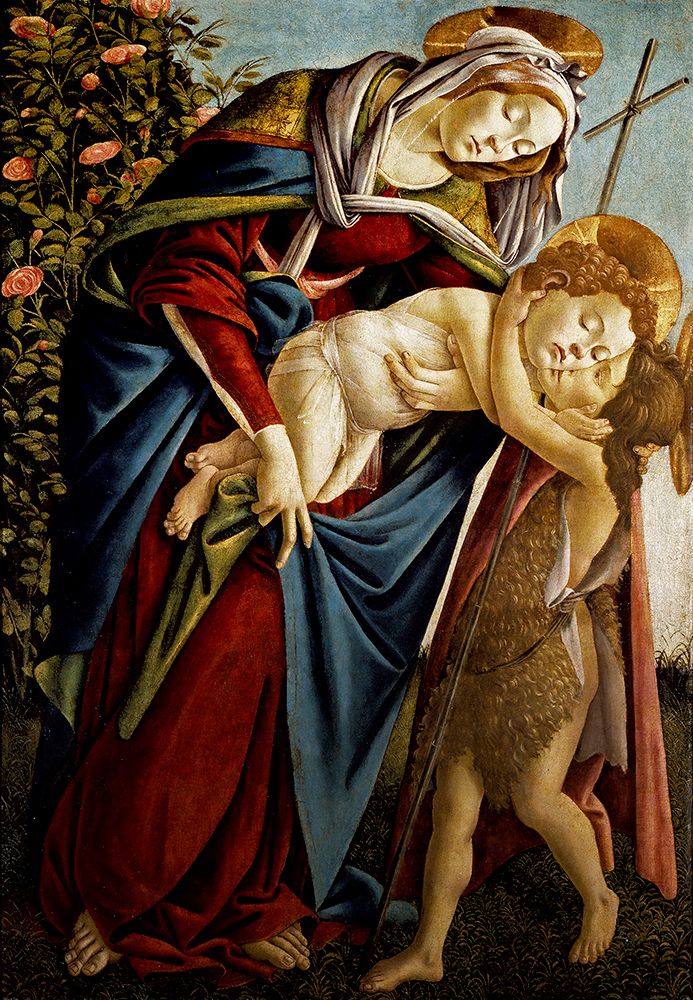
Sandro Botticelli, Virgin and Child with the young Saint John the Baptist, about 1505, tempera on canvas. Galleria Palatina, Palazzo Pitti, Florence. Courtesy, Museum of Fine Arts, Boston.
From Venus to the Virgin, Botticelli’s women are renowned as the embodiments of grace, elegance, and beauty. The unique style of the Italian painter—with his idealized, elongated, buoyant figures in flowing tresses and drapery—has become emblematic of the Italian Renaissance, and his works are among the most recognizable in the world. Less well known is the fact that Sandro Botticelli, while patronized by the Medicis and famous in his own time, fell out of favor late in his life, abandoned many of his own paintings, and was almost entirely forgotten. The ethereal, saintly calm and composure of his figures belie the tumultuous times in which they were painted. Botticelli and the Search for the Divine, a new exhibition at the Museum of Fine Arts, Boston (MFA), explores the changes in Botticelli’s style and subject matter in the context of the shifting political realities in Florence during his life, and the events that nearly wiped out his oeuvre.
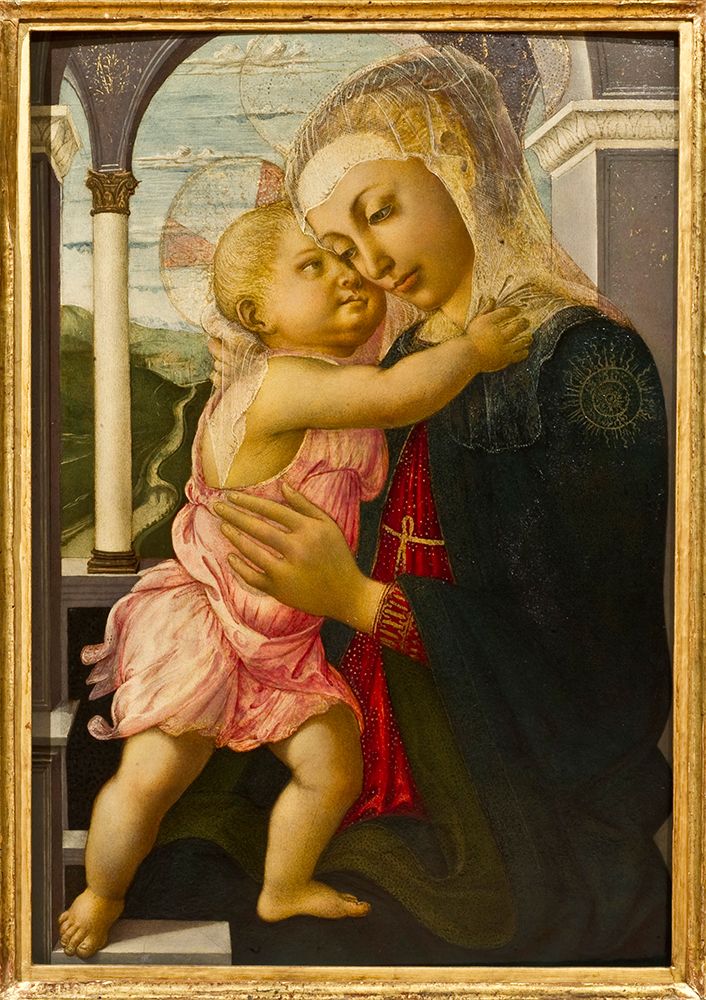
Sandro Botticelli, Virgin and Child (Madonna of the Loggia), about 1467, tempera on wood panel. Gallerie degli Uffizi, Florence. Courtesy, Museum of Fine Arts, Boston.
Despite the painter’s fame, this is the first major exhibition of Botticelli’s work in the United States. First shown at the Muscarelle Museum of Art at the College of William & Mary in Virginia, Botticelli and the Search for the Divine brings together 15 paintings by Botticelli, with loans from the Galleria degli Uffizi and other churches and museums in Italy, along with important works from the MFA and those borrowed from the Isabella Stewart Gardner Museum and the Harvard Art Museums. These include a version of Botticelli’s famous Venus (c. 1484-1490), on loan from Turin’s Galleria Sabauda, exhibited for the first time in the United States.
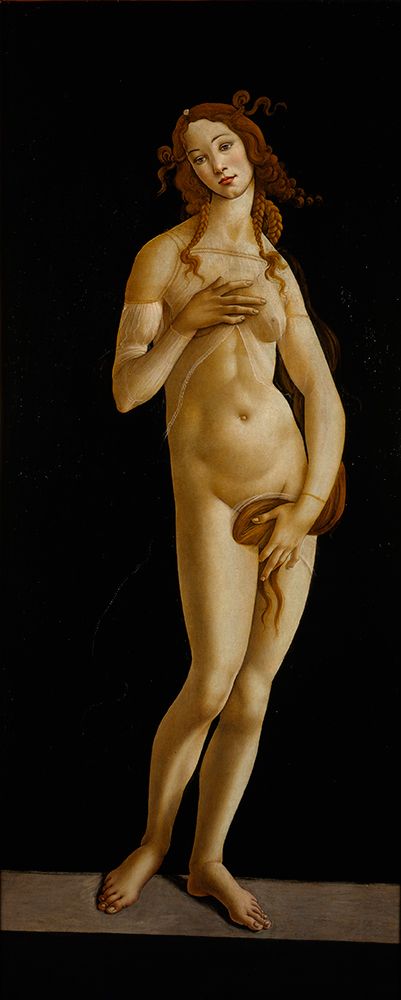
Sandro Botticelli and workshop, Venus, about 1484-1490, tempera on canvas. Galleria Sabauda. Inv. 172. Turin. Courtesy, Museum of Fine Arts, Boston.
One of only two extant versions of Venus that Botticelli painted after his famed Birth of Venus (1486), which hangs at the Uffizi, the painting at the MFA features the sole figure of Venus against a simple black background, striking her familiar contrapposto pose, her expression languid and serene, with long hair plaited and flowing. Botticelli’s Birth of Venus was executed at the pinnacle of his career, thought to have been commissioned by the Medici family as a wedding gift. At the time, his paintings of mythological, nude subjects were in high demand. Later in life, however, gripped by religious fervor, he would denounce such “pagan” works, and may have destroyed many of his own paintings.
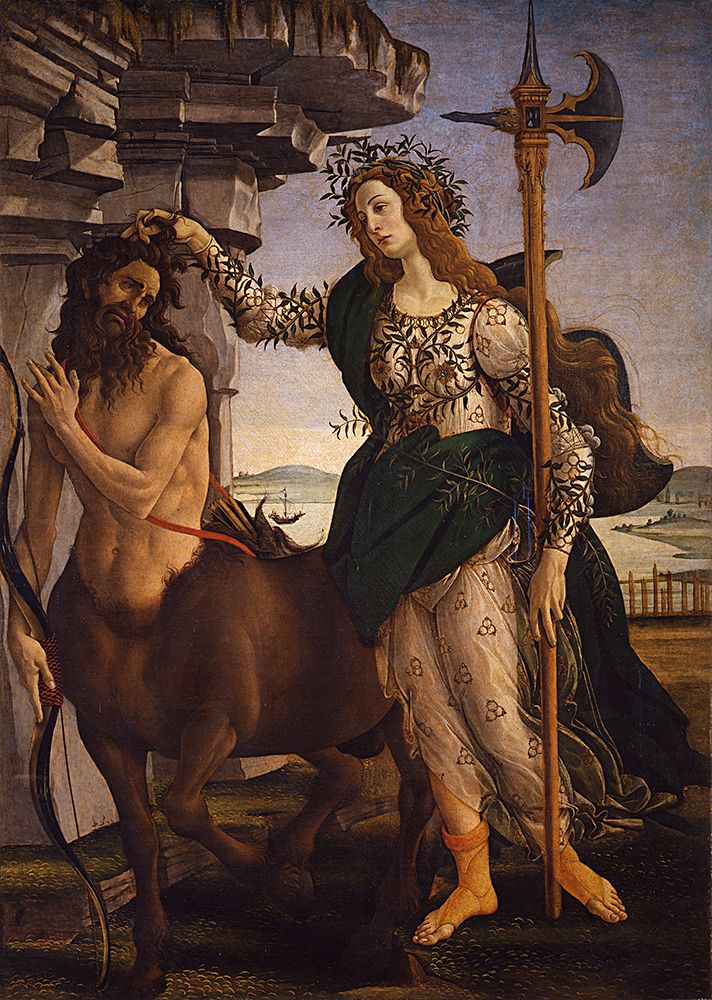
Sandro Botticelli, Minerva and the Centaur, about 1482, tempera on canvas. Gallerie degli Uffizi, Florence. Courtesy, Museum of Fine Arts, Boston.
Botticelli was born in Florence in 1445, and studied under Fra Filippo Lippi after a stint as a goldsmith. He came of age at the cusp of the High Renaissance, along with his contemporaries Pietro Perugino, Domenico Ghirlandaio, Filippino Lippi (Fra Filippo’s son), Cosimo Rosselli, Andrea del Verrocchio, and Leonardo da Vinci. He enjoyed the patronage of the Medici clan, and in the mid-1480s painted a cycle of frescos for the Sistine Chapel. But Botticelli’s fortune changed when the ruling Medicis were cast out of Florence, and the apocalyptic religious sect of Fra Girolamo Savonarola took over the city.
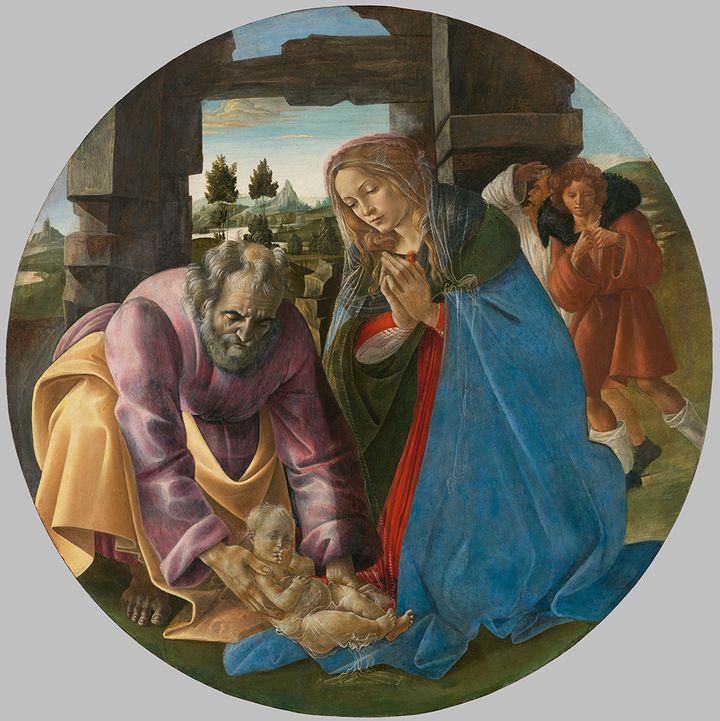
Sandro Botticelli, Nativity, about 1482-1485, tempera and oil on panel. Isabella Stewart Gardner Museum, Boston, P2eI. Courtesy, Museum of Fine Arts, Boston.
Savonarola advocated a puritanical vision for society, and prophesied of the coming of a great biblical flood unless the people rid themselves of all secular sin and extravagance. As Giorgio Vasari recounted in his Lives of the Artists, Botticelli fell under the influence of Savonarola and became “so ardent a partisan that he was thereby induced to desert his painting, and, having no income to live on, fell into very great distress.” Into Savonarola’s “bonfires of the vanities” the citizens of Florence—Botticelli included, some believe—cast paintings, books, manuscripts, and other “immoral” objects. We will never know what masterpieces on par with the Birth of Venus may have gone up in the flames.
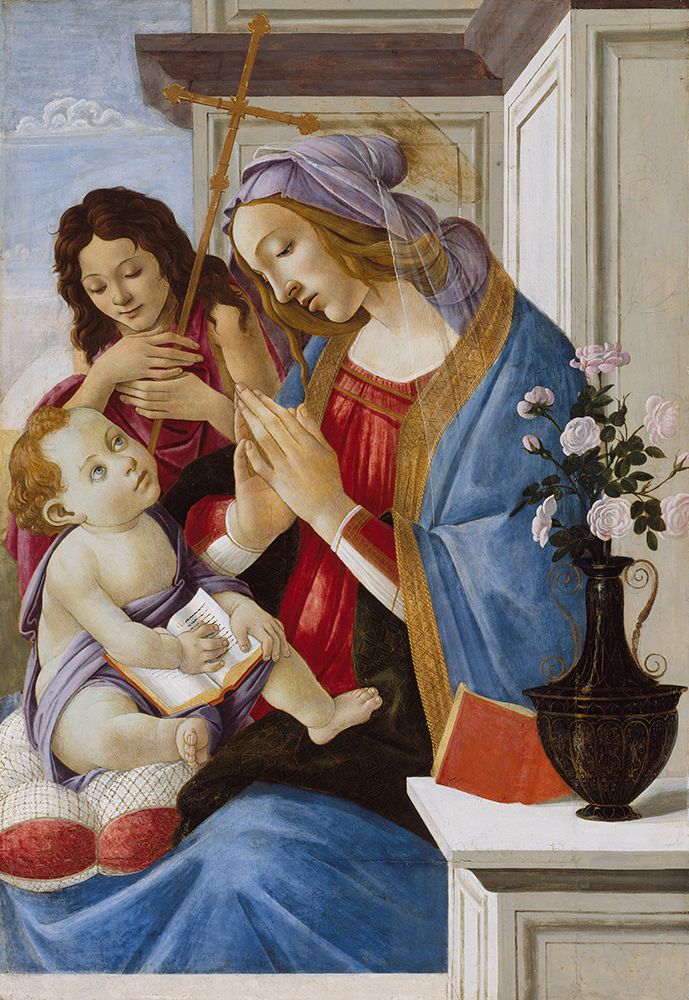
Sandro Botticelli, Virgin and Child with Saint John the Baptist, late 1490s, tempera on panel. Museum of Fine Arts, Boston. Sarah Greene Timmins Fund. Photo: © Museum of Fine Arts, Boston.
Botticelli and the Search for the Divine recounts the changes in the painter’s style as he gave up his worldly ways and committed himself to religious subject matter. One of Botticelli’s favorite subjects throughout his career was the Virgin and Child, of which several are on view at the MFA. Typifying his late career works, the MFA’s own Virgin and Child with Saint John the Baptist (late 1490s) shows a stiffer, more austere style, his figures exhibiting more rounded contours and a simplified palette. The painting Mystic Crucifixion (c. 1500), on loan from the Harvard Art Museums, strikes a different, darker feeling, showing an apocalyptic bent to Botticelli’s manner, with Christ crucified and an ominous cloud of smoke obscuring the city of Florence in the background. Believed to be a response to the execution of Savonarola in 1498, the painting incorporates many of the themes from the friar’s portentous sermons.
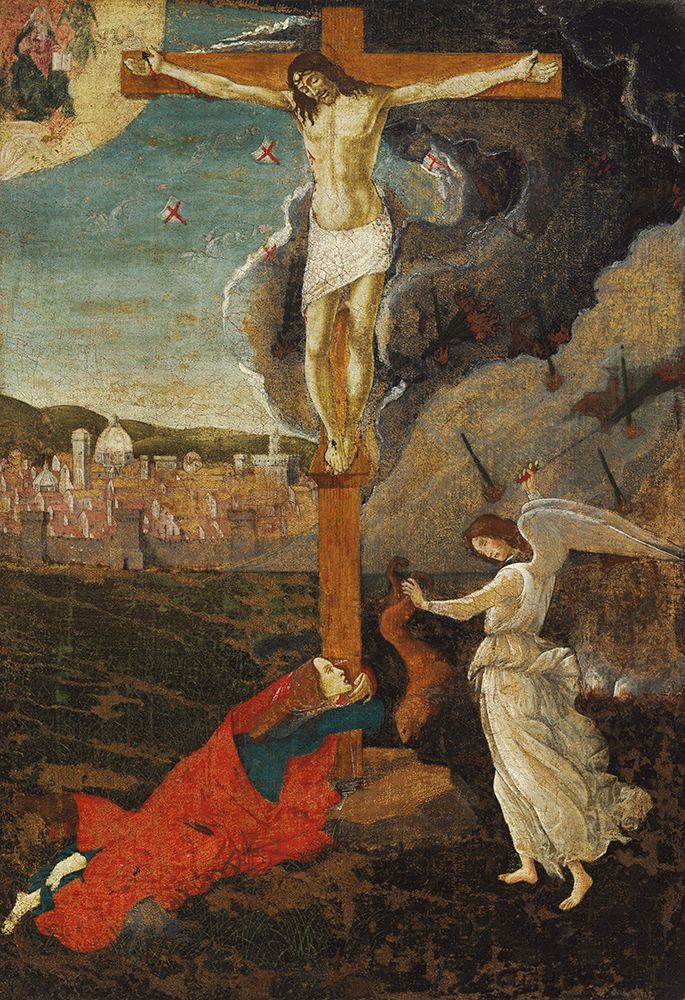
Sandro Botticelli, Mystic Crucifixion, about 1500, tempera and oil on canvas, (transferred from panel). Harvard Art Museums/Fogg Museum, Friends of the Fogg Art Museum Fund. Courtesy, Museum of Fine Arts, Boston.
Vasari reports that Botticelli’s final years were marked by extreme poverty. Were it not for the efforts of the Medici, “he would have almost died of hunger.” After his death, in 1510, Botticelli’s work was all but forgotten, and was not rediscovered until the 19th century, when he became a favorite of Pre-Raphaelite painters like Dante Gabriel Rossetti and John Everett Millais. At the turn of the 20th century, Botticelli’s star rose; between 1900 and 1920 more books were devoted to Botticelli than any other painter. His paintings are now among the most reproduced in the history of art; his most potent image, The Birth of Venus has inspired countless homages and appropriations, from Andy Warhol to David LaChapelle.
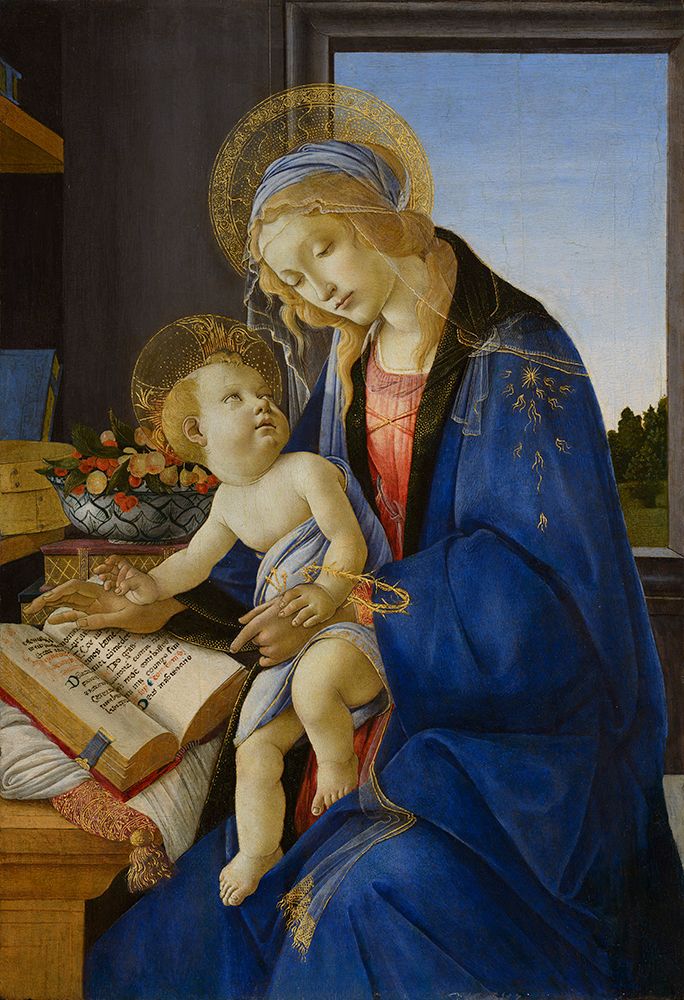
Sandro Botticelli, Virgin and Child (Madonna of the Book), about 1478-80, tempera on wood panel. Museo Poldi Pezzoli, Milan. Courtesy, Museum of Fine Arts, Boston.
While Botticelli and the Search for the Divine brings Venus in the flesh to American shores, sating the desire for Botticelli’s most famous painting, it also provides a nuanced and complex understanding of Botticelli’s life and times, his religious devotion, and the development of his style. The exhibition also features rare books—including writings by Savonarola, and a copy of Dante’s Divine Comedy “on which [Botticelli] wasted much of his time” illustrating, according to Vasari—engravings, and woodcuts, and select works from Botticelli’s contemporaries.
Botticelli and the Search for the Divine is on view at the Museum of Fine Arts, Boston from April 15 to July 9, 2017.
—Natalie Hegert
